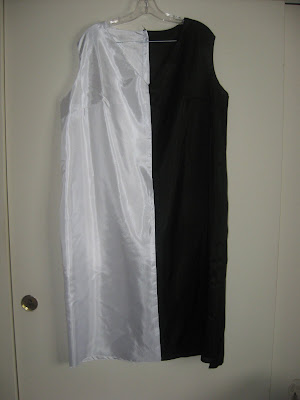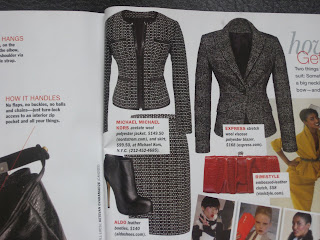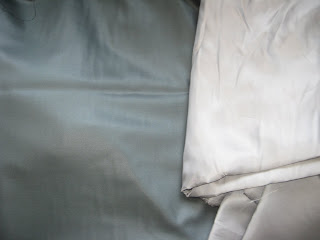So it is very important to me to encourage new sewists! And in that vein we are going to step away from the technique questions this week and discuss some basics. Because believe it or not I've received quite a few basic sewing questions...
The first questions are from Theresa. She asks...
1) Thread - What type of thread is best for garment sewing? Quilters use 100% cotton thread for quilting because the thread will break before the fabric rips which is preferable as the repair is easier. Does this same theory apply to garment sewing? Does the type of thread depend on the the type of material?
Whew....this is a post unto itself! But since we are keeping it basic and assuming that you are just beginning to sew, I would recommend either a 100% polyester thread by Mettlers or Gutterman for garment sewing. To me these are better quality threads than Coats and Clarks and produce a superior sewn seam. (say that 3x!) However, if Coats and Clarks is all that you have available, by all means use it. I started out sewing with C&C and I made great garments using it.
I would, however, strongly caution anyone from buying and using the thread in the bargain bins! Gutterman and Mettlers use long fiber technology to ensure an even and optimum thread quality. The thread in the bins have short fibers, can be really fuzzy and doesn't feed evenly in your machine. Thus causing a lot of lint to accumulate in the crevices of your sewing machine, as well as, the thread to constantly break. It may be a cheap alternative but remember the old saw that you get what you pay for!
Threads Magazine did a great article recently called, "How Thread is Made and How it Affects Your Sewing." It's in the September 2009 issue and it's chockful of wonderful information on the process of creating thread along with how to choose the right thread for the job. There are three memorable points: 1. Don't match thread to fiber content
2. Don't rely on size alone when selecting the best thread for your project.
3. Do match your needle and thread
and finally a Carolynism...do match the color of your thread to the colors in your project!
If you don't have a copy of this issue, please get one! It will give you a greater understanding of thread and when & how to use it. BTW, there is also a great article on pressing while sewing in this issue also called "Learn the Right Way to Press as you sew!"
Should the bobbin thread be the same brand & type & color as the top thread? Does the quality of thread vary greatly with price?
Personally I find that I get a better stitch quality and seam when I use the same thread in the bobbin and in the machine. I rarely mix threads unless I need a different color for the top and the bottom of the garment. Now of course there are exceptions to this rule but we are going with the very basics here.
As for quality and price - please refer to the portion above about bargain thread versus regular priced thread! There is a difference!!!
 2) Machine needles - I very rarely change my sewing machine needle 'cause I forget that it should be done. How often do you recommend changing the needle and what needle size is best for garment sewing?
2) Machine needles - I very rarely change my sewing machine needle 'cause I forget that it should be done. How often do you recommend changing the needle and what needle size is best for garment sewing?Ohhhhh I'm getting ready to seriously burst your bubble. Please, please, please change your needle IMMEDIATELY! I change my needle after every project. Especially since I don't sew the same type of fabric from garment to garment. You want to achieve the best stitch quality so you need to use the right needle for your fabric. Also during the course of sewing a needle can get nicks, the point can become dull or the needle can develop burrs...these conditions will affect the stitches your machine makes...so another reason to change your needle often.
As you may or may not know, needles come in sizes. Each size is to be used with a specific fabric type. The smaller the number of the needle, the finer the fabric.
Then there are also different types of needles:
Sharps - have a sharp point for piercing fabric - comes in sizes 60/8 through 120/20 and used for heavyweight or densely woven fabrics. Also good for decorative topstitching.
Universal - has a somewhat rounded tip for piercing fabric - comes in sizes 60/8 through 120/20 - used with all types of fabric
Ballpoint - has a rounded tip and used primarily with knits.
Twin or double needles - Are two needles attached to one shank and usually has a distance between the two needls from 1.6 to 6mm. These are used for decorative stitching and hems.
There are also Wing, Topstitching, Denim/Jeans and needles for stitching on leather.
Needle sizes:
For a wonderful explanation of needle sizes - what the numbers mean and what types of fabric they should be used to sew...about.com has a great article about it here. If you want a chart that you can print out and put near your sewing machine - try this one. And finally a few tips from the book, "The Experts' Book of Sewing Tips & Techniques." Coats & Clarks recommends the 8-hour rule. They suggest that a good sewing machine needle is only good for about 8 hours of sewing and should be changed after 8 hours.
C&C also recommends keeping your needles clean by removing fabric finishes that can build up on a sewing machine needle resulting in skipped stitches. To clean the needle use a cotton ball with oil, detergent or a cleaning solvent. Sew a line of stitches on a scrap piece of fabric before using the "clean" needle in your good fabric to remove any leftover residue.
*Personally I've just used a little alcohol on a cotton ball to remove any fusible interfacing or gook from my needle and this has worked fine. But that's what I do!*
C&C also advises you to discard any needle that is less than perfect because you don't want it to snag your fabric.
Finally can I add some "Carolynisms"
1. Keep a supply of Universal needles in all sizes on hand so that you never run out in the middle of the night.
2. Keep thread in a dust-free environment to prevent lint issues as well as maximizing it's shelf life.
3. Thread does have a shelf life. If your grandma gives you some thread from 25 years ago, check it carefully because it may cause problems in your sewing machine.
4. Discard needles carefully and if you happen to break one while sewing, make sure that you retrieve all of the pieces from your sewing machine. One small piece or shard can do some serious damage to your sewing machine.
Okay that's it for today! I really hope you've learned something or at least you will pick up the Threads Magazine referenced. The floor is now open...any comments, suggestions or questions are welcomed! Also if you have another reference (internet, book or magazine), please feel free to share it. Personally I believe the more information shared ~ the better!
Next week for New Sewists Thursdays - there will be a guest blogger who will do a two-part series on "How to Fit." Since September is National Sewing Month, some of the topics featured for New Sewists Thursday will be on picking a pattern for your size, some more fabric information - of course! - and another detailed post on a technique.
As always...more later!
 I'm in preparation mode for my upcoming sewing vacation. I've made a list. Crossed half the stuff on it off and rewritten it...3x now!!! Can you tell I'm excited...mostly I'm excited because for 10 days I won't have to get up at 5:30 in the morning!
I'm in preparation mode for my upcoming sewing vacation. I've made a list. Crossed half the stuff on it off and rewritten it...3x now!!! Can you tell I'm excited...mostly I'm excited because for 10 days I won't have to get up at 5:30 in the morning! from some of the smaller button shops in the district. The shop has an extensive collection of buttons housed in a wall of button boxes that you pull down and look for the button you want. They do provide quaint little tables in the center of the store so that you can examine the buttons very carefully. It has a much more laid back atmosphere than the garment district button stores have...there's a buzz of excitement that's missing here. It's more genteel and quiet...sort of like the "little old ladies" that man the check out table in the back of the store.
from some of the smaller button shops in the district. The shop has an extensive collection of buttons housed in a wall of button boxes that you pull down and look for the button you want. They do provide quaint little tables in the center of the store so that you can examine the buttons very carefully. It has a much more laid back atmosphere than the garment district button stores have...there's a buzz of excitement that's missing here. It's more genteel and quiet...sort of like the "little old ladies" that man the check out table in the back of the store. 






 The secret here is to not only think of the measu
The secret here is to not only think of the measu






































